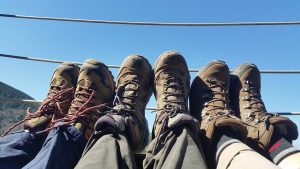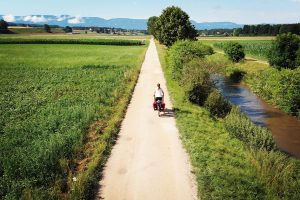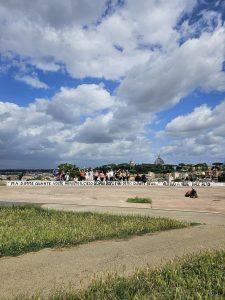Autumn is one of the best seasons for walking, because of the mild temperatures and the beautiful warm colours of the foliage, but also because there are fewer pilgrims on the route. However, it is necessary to consider a few precautions related primarily to the weather conditions that may occur during these months. General humidity, the rain soaking your backpack and clothes, cold hands and feet, muddy and heavy shoes are not valid reasons to renounce a walk during the autumn months if you follow these tips that we have put together especially for you. In addition to good physical training, of course.
TABLE OF CONTENTS
- Check weather and route conditions beforehand
- Waterproof onion layering
- Waterproof shoes
- Protect your backpack
- Be careful where you put your feet
- Is it better to walk or run in the rain?
- Walking in the rain alone or in company
- Accept the rain like you would the sun, because it is good for you
- Learn to wait
- Don’t forget to smile!
1. Check weather and route conditions beforehand
It seems obvious, but it is really important to take a look at the weather every night to prepare for next day’s walk. Trusting your own instincts, even if you are a veteran of outdoor adventures, or popular beliefs (e.g. consulting the onion calendar), can be a risk, so to be on the safe side, check again in the morning before you head out. The weather forecast seen by chance on TV or the neighbour who tells you when leaving the house that they heard the weather is good do not count. It is better to rely on official services, with a focus on local weather, such as:
- in England: Met Office
- in France: Meteo France
- in Switzerland: Federal Office of Meteorology and Climatology MeteoSwiss
- in Italy: Air Force Meteorological Service
Remember that in the autumn months the hours of daylight are reduced and, above all, that the weather can vary, particularly if you are in mountain areas along the way. It is therefore good to consult the civil protection bulletins and also monitor the weather conditions on the way. Take advantage of these stops to drink, because even if you think you don’t need to, in reality, the energy spent walking in the rain is greater than that spent in the sun.
Also be sure to prepare your walk carefully by studying paths and routes, perhaps choosing those less exposed and with natural shelters, to avoid finding yourself in unpleasant situations. Walking in places with poor visibility, and in particular walking on slopes, rocks or logs made slippery by rain, crossing impervious areas, with the risk of landslides or dislocation, or meadows and clearings that have become marshes, or with torrents swollen by heavy rainfall, could lead to great difficulty, if not even the impossibility of continuing the journey, or even worse, getting seriously injured.
Remember that facing increasingly adverse conditions may mean that you’ll have to find shelter temporarily, but you may also have to shorten your itinerary, with changes and detours until you retrace your steps. Also, consider that walking on muddy ground requires more effort, and therefore more energy. It will also slow down your pace, so the time needed to walk a given section of the route may be longer than on a sunny day.
That’s why we recommend you consult the AllTrails app, a partner of the Via Francigena. On this app you can find maps and indications, e.g. on the presence of shelters or resting places, as well as weather forecasts and advice from other pilgrims who have decided to hike in the rain. With the RECORD button you can also record your route (with time and mode of travel) and thus compare your adventures in the rain on your walk.
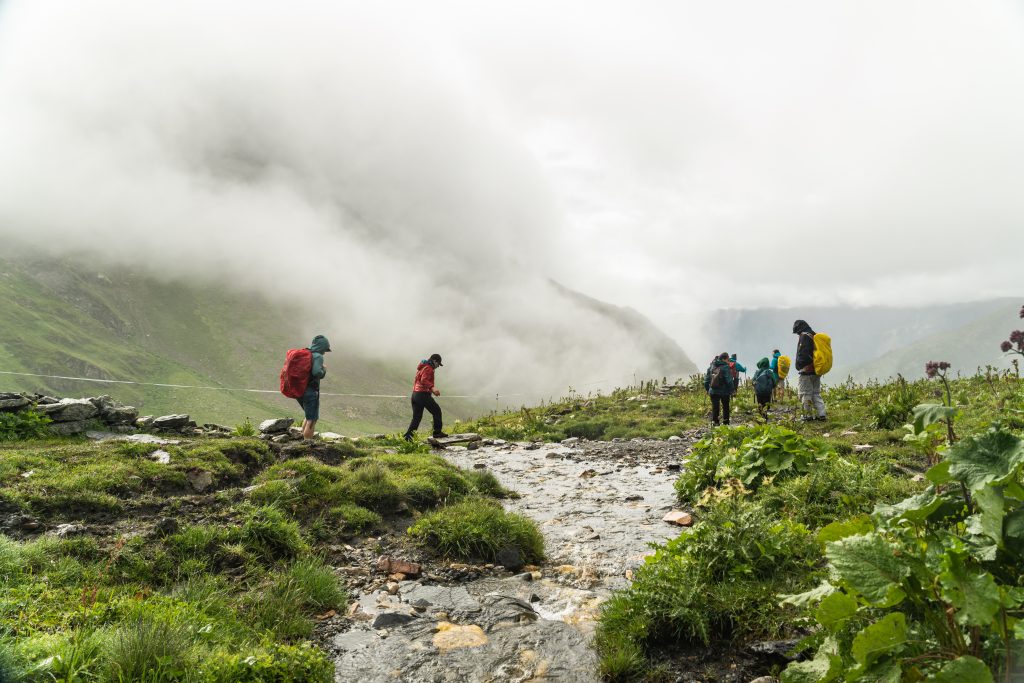
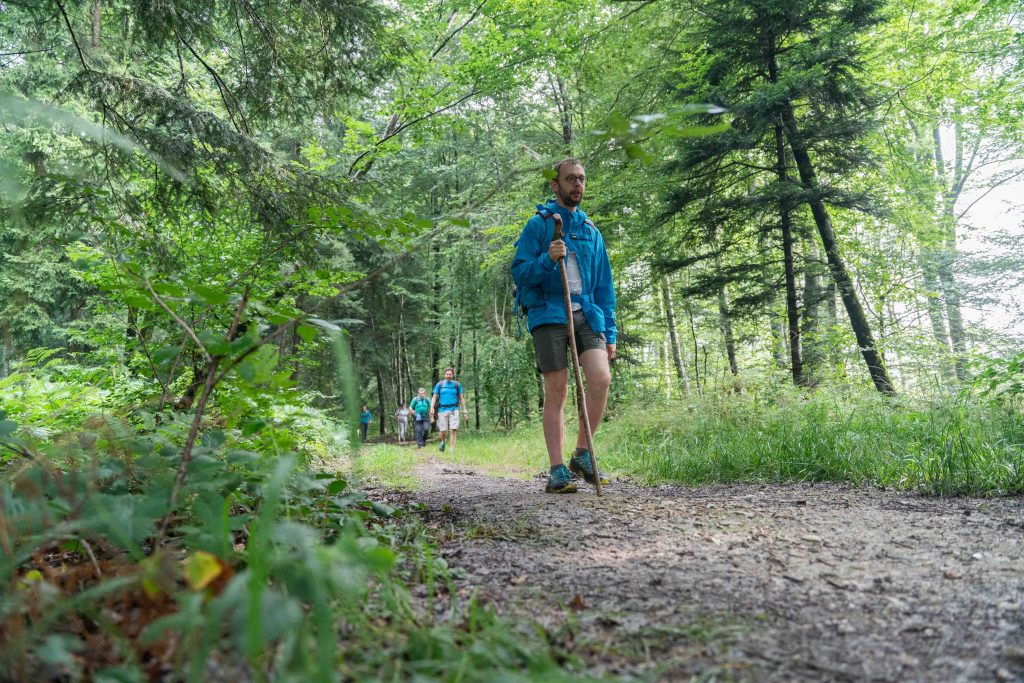
2. Waterproof onion layering
You’ll get wet, for sure! Dressing waterproof doesn’t mean going out in the rain and coming back perfectly dry, because on a rainy day, in the long run, even the most waterproof or water-repellent garment in the world can have water seeping in between the seams. However, you can try to stay as dry as possible, and limit the wet effect, by covering up and wearing the optimum clothing, but above all by following the “onion layering” principle.
For starters, don’t wear cotton. It’s a material that absorbs moisture and is difficult to dry, so it is better not to have it in contact with the skin, even if it is underwear. Wet cotton clothes stick to you and can only make you feel very cold. Opt for water-repellent and breathable garments, including natural ones such as wool, or synthetic ones such as nylon or polyester. They are light technical fabrics that dry quickly. In summer, wear a lightweight UV-proof technical jersey, and for colder seasons a thermal jersey, because it retains heat, keeps your body temperature constant, dries faster, and is breathable.
The middle layer of your walking clothing, in the rain, must provide you with warmth, both in summer, when you can resort to the classic sweatshirt, and in winter, wearing a light and soft fleece or microfleece garment.
For the outermost layer of your clothing, the choice is wide, and everyone implements the one they prefer based on their own experience. But the essential point is that it must be water-resistant and waterproof. It is therefore the most important piece of clothing for walking in the rain. Here are some options you can choose from:
- waterproof jacket – comfortable for long walks
- PVC cape – light, covers your rucksack completely, so useful if you are walking across vast meadows, but not on uphill or downhill stretches or on wooded paths, and is not breathable
- poncho – light and roomy, but bulky and causes condensation, so it generates a sauna effect)
- windproof jacket – to insulate you from the effects of light drizzle
- a k-way – useful on impervious trails and in the woods, but always to be combined with a sweatshirt or similar, as it cools and wets the clothes underneath
- waterproof hardshells – more insulating and rigid
- or softshells – more comfortable
- garments with a goretex® membrane – breathable, windproof and waterproof, but very expensive and above all not as eternal as sailing oilskins.
True, you won’t look particularly fashionable in this outfit, but we can assure you that this is the most effective way to stay dry: practically, it’s like wearing an umbrella! Keep one of these garments in an easily accessible place in your backpack, for you to reach quickly when the rain comes pouring down unexpectedly.
Remember to also wear a waterproof hat or cap, perhaps with a visor that will cover your eyes and your glasses from the water. It will also keep you warm and dry on your head. Such a garment is preferable to just the hood of your jacket, which must fit perfectly otherwise it would be an obstruction to your vision, and you can actually wear it underneath.
And what about the umbrella? It depends on your itinerary, on how heavily it rains, and on how strong the wind is. It covers your head and backpack and doesn’t make you sweat, so it’s fine for a long, leisurely walk. The same cannot be said for the more challenging sections where you will have to move with agility, have a wide view, and will certainly be uncomfortable in rain and strong wind together, if not even dangerous during thunderstorms, due to the metal parts.
When it comes to covering and protecting your legs, using waterproof trousers can be a good expedient. Options range from trousers made from technical fabric with covers over them, to lighter rainproof ones.
Finally, we recommend a pair of plastic PVC trousers. Wearing the whole outfit together, you can freely do whatever you want without worrying about getting your good clothes wet or dirty: you sit on the ground or on muddy benches, walk in tall grass, do a rain dance, or open your mouth to drink from the rain in those mid-stage sections where no one can see you.
As rain-proof equipment, gaiters or leggings are also very useful: besides protecting you from getting wet, they will also prevent water, mud or snow from entering your hiking boots thus protecting your socks and feet.
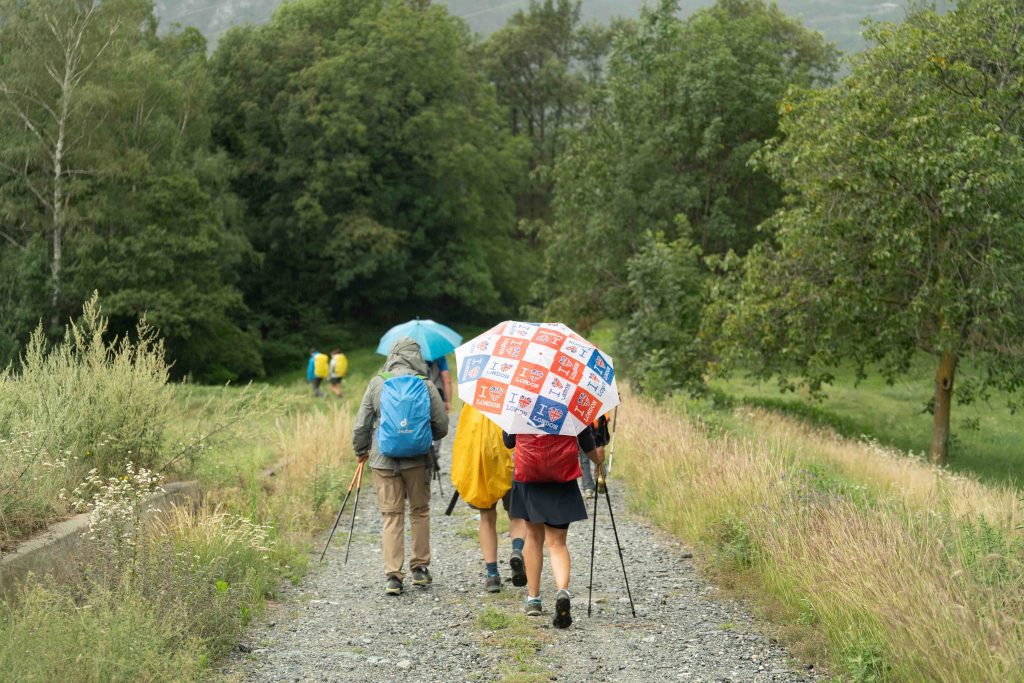
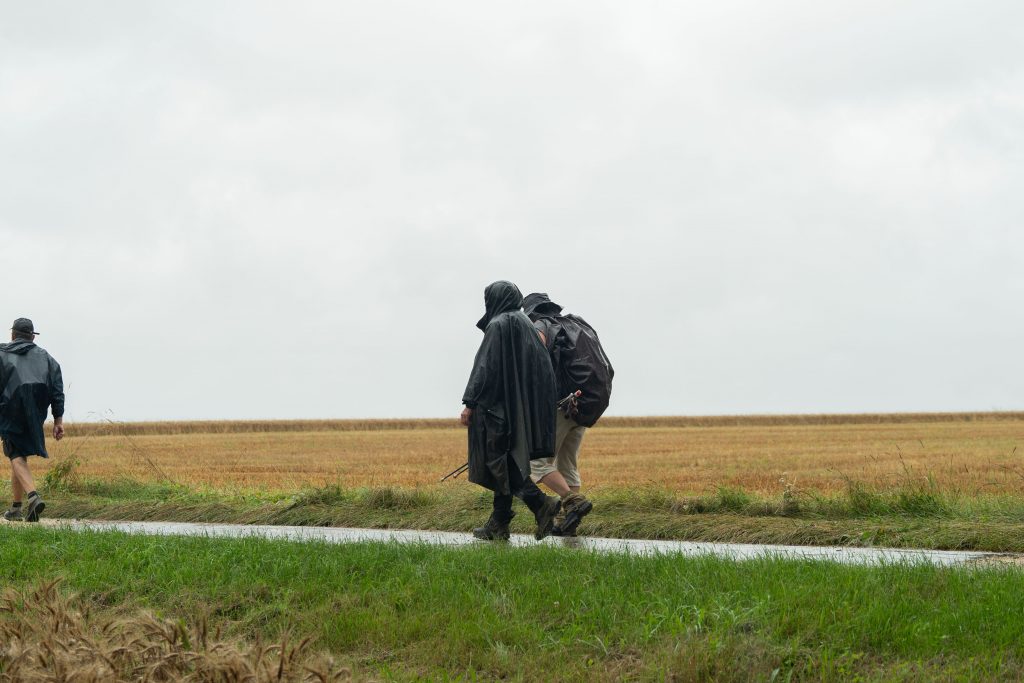
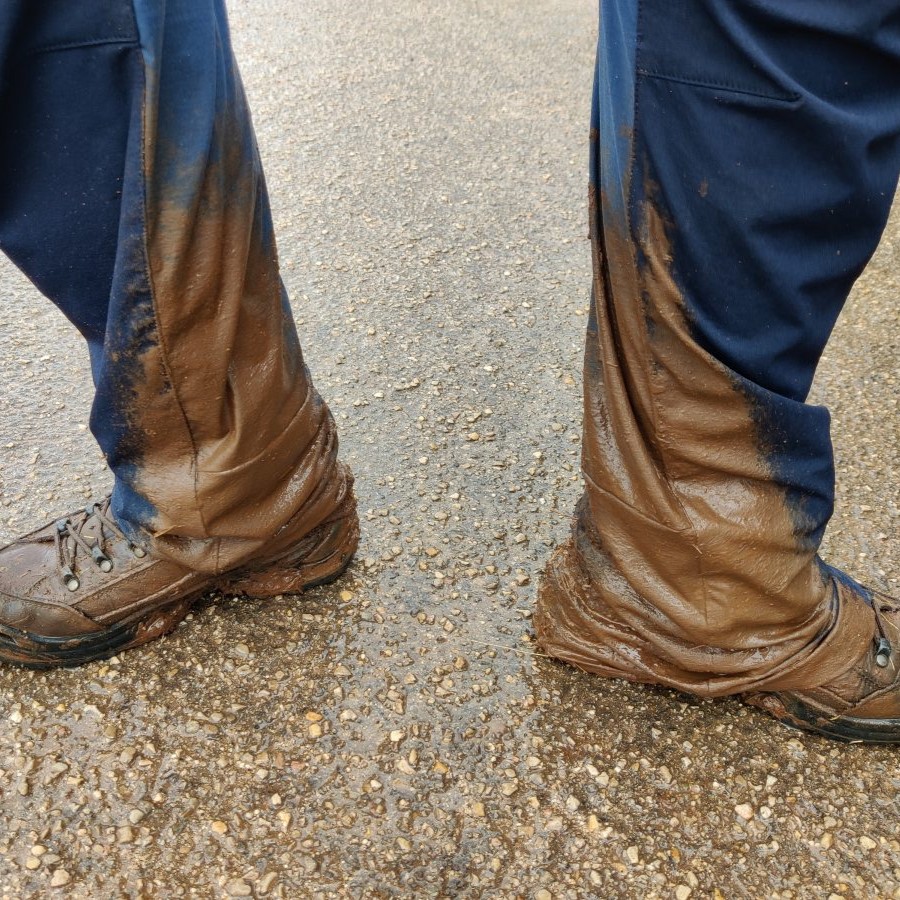
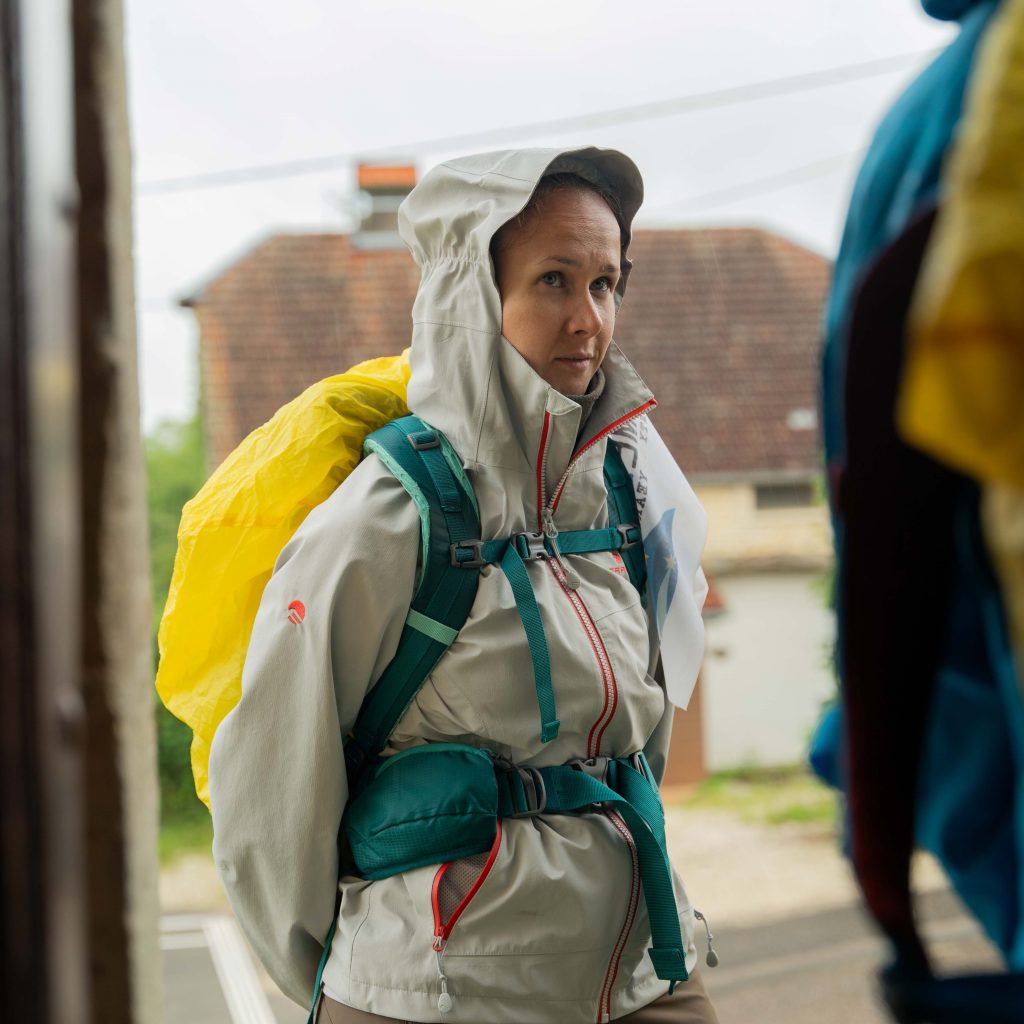
Having survived the rainy day, the most important moment arrives: getting out of your wet clothes! A complete change of clothing is necessary to avoid potential hypothermia, so in this season it is advisable to bring at least one extra change of underwear, two extra middle layers, and some extra socks to be replaced during the stopover in the refuge or hostel. If you are only on the trail for one day, the change can be left in the car or at a meeting point to avoid weighing down your backpack. We also recommend that you bring a pair of sandals or flip-flops to immediately free your feet and let them breathe. The skin of the feet weakens when wet for a long time, increasing the risk of annoying blisters, which can however be treated with plasters and other aids.
Very important also is making sure that your spare parts and all the contents of your backpack stay dry during the rainy day. There is no nastier surprise than finding all your clothes damp once you get under a roof! Therefore, we advise you to take precautions from the moment you pack your backpack before setting off: ideally, you should always keep your clothes divided into compartments, using special waterproof bags found in most sports shops. Otherwise, you can use plastic bags. These bags will also help to keep your backpack tidy during your trip and to keep your electronic devices safe.
3. Waterproof shoes
When it comes to protecting your lower body from the rain, shoes should clearly be as waterproof as possible, with their soles and design suitable for muddy and slippery trails. In cold weather, opt for heavy, reinforced footwear, and in summer for light, technical footwear with a breathable upper part that dries quickly. Among the products on the market are some made of GORE-TEX® (for longer walks), such as Garmont‘s LAGORAI II GTX waterproof and breathable shoes. They feature an increased support for the ankle, with two cushions that favour foot movement, and a rubber reinforcement to protect your toes.
Finally, make sure that your shoes are not worn under the sole to avoid slipping on wet ground. Falls due to slipping are one of the biggest causes of hiking accidents.
Socks can be waterproof, but keep in mind that your foot does not perspire when you wear them. It is best to wear technical waterproof ones with reinforcements in the heels only when it rains. Then remove shoes and socks as soon as you reach the end of the stage to let your feet breathe.
In addition, to maintain the waterproof effect you should apply a special waterproofing spray to your shoes before setting off.
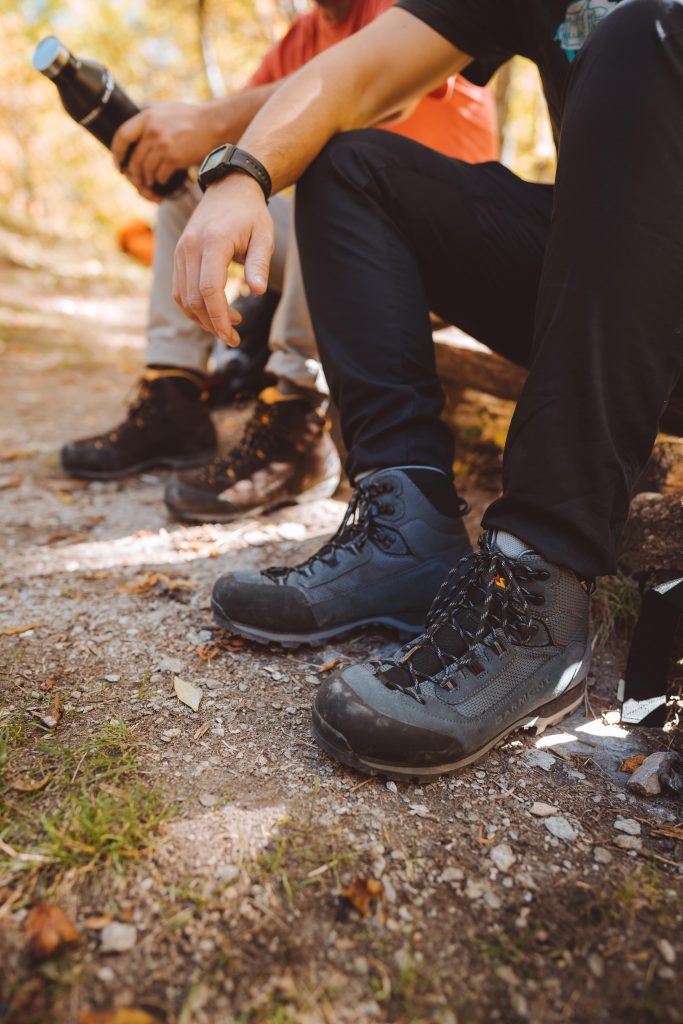
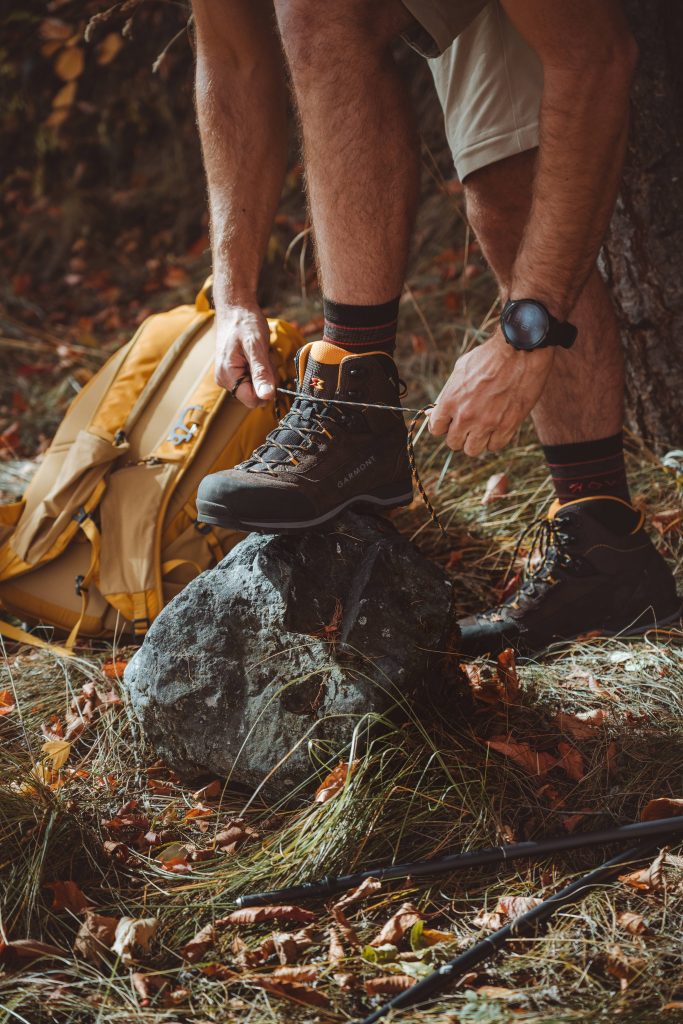
4. Protect your backpack
A wet backpack not only dampens your back and the contents inside, but above all it weighs! The various openings such as pockets and lids also expose it to moisture. So since backpack manufacturers provide them and often supply them with the product, always use a backpack cover!
For example, the Finisterre backpacks of our partner Ferrino have a waterproof cover inside, which you can easily put around your backpack when it starts to rain, and at the same time it still allow you to access your backpack’s content.
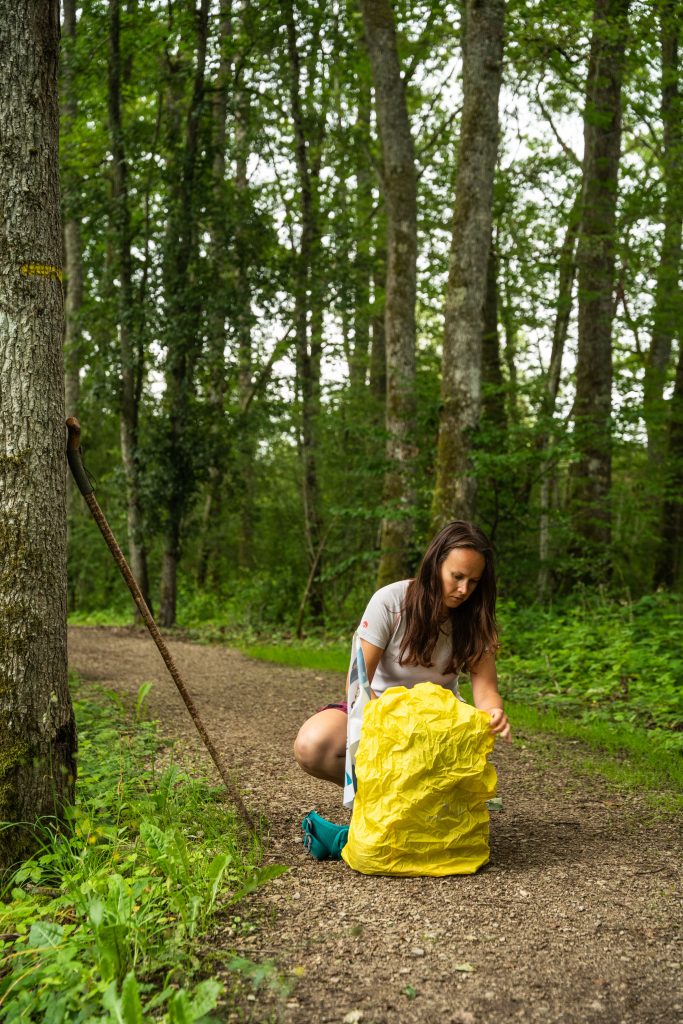
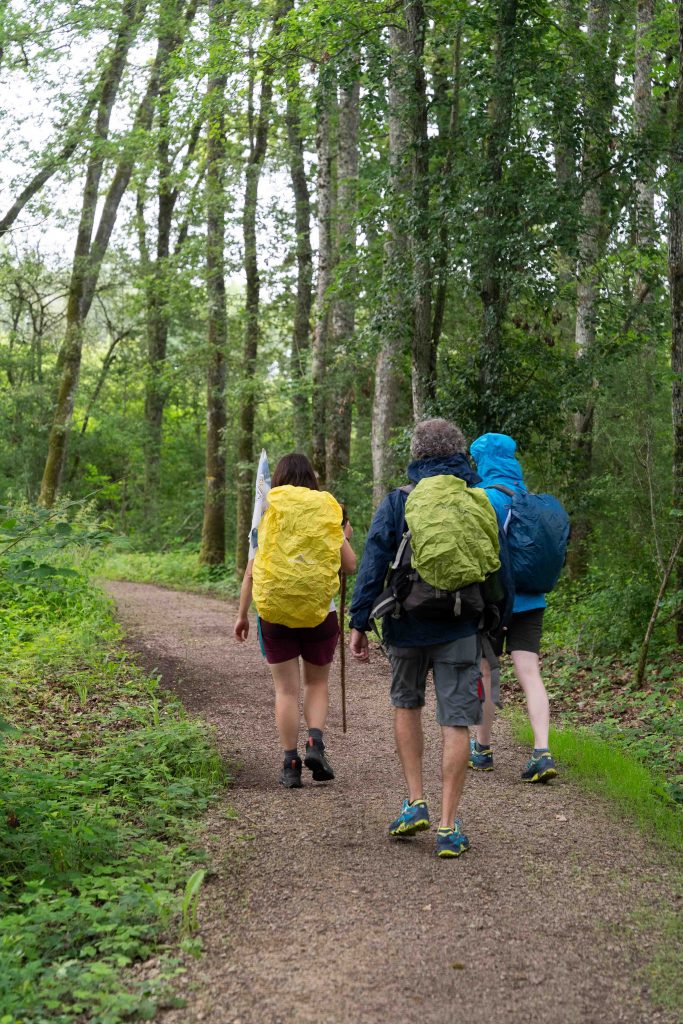
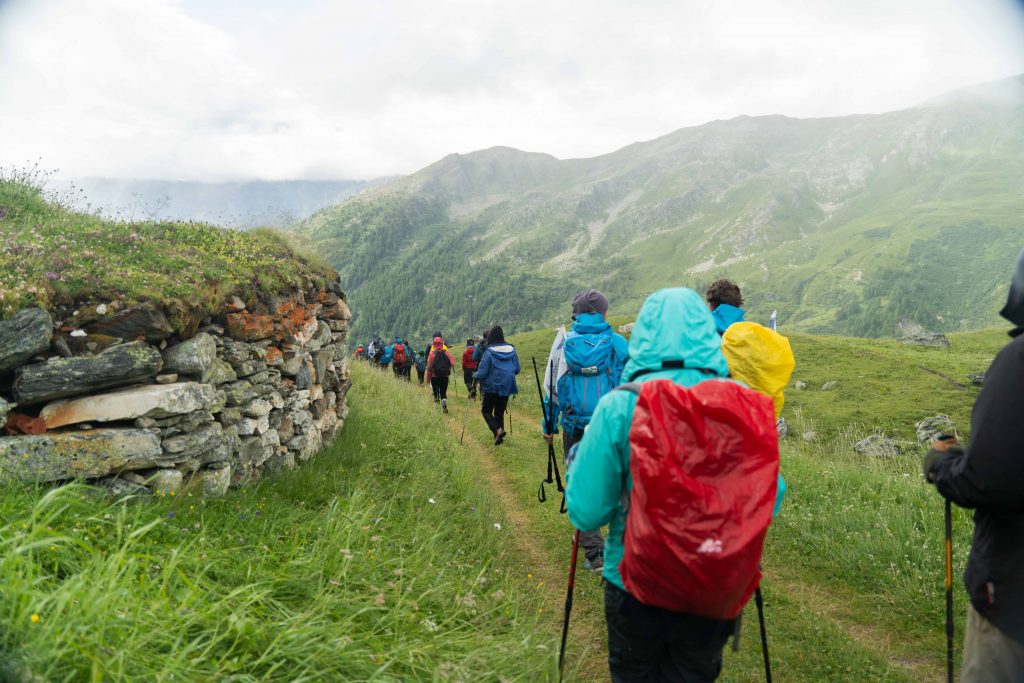
5. Be careful where you put your feet
The ground becomes more slippery with rain. Small streams of water can appear along the path, which should be avoided as much as possible. In these cases, it is useful to have a pair of trekking poles or a walking stick, to help you keep your balance even on muddy ground. In addition to poles, wear gloves to keep your hands warm.
Bear in mind that walking one or more days in the rain involves fatigue, so listen to your body and plan your walk with this in mind. When the rain is very heavy, it is inadvisable to walk along the banks of a river. They can swell quickly, so if you find yourself near riverbeds or gullies in situations of persistent rainfall, consider your potential “escape routes” so as not to find yourself in the middle of flash floods. If you find yourself (but it would be better to avoid it) having to cross a watercourse, make sure you do so via bridges or similar, but in the absence of these, if fording the stream is unavoidable, pay attention to the intensity of the current and the water level, and unhook your backpack! This way you can easily get rid of it if necessary.
Also watch out for rocky walls from where debris could fall. Wet logs and other slippery surfaces can also be tricky as you cross them, while paths over ridges or clearings that have turned into bogs should be avoided during thunderstorms, as they can attract lightning!
During rainy days it is therefore more advisable to walk along forest paths, where the rain is less heavy and the ground absorbs the water better: the tree’s leaves provide shelter and the roots collect the water, which thus does not accumulate on the ground surface. However, an intense thunderstorm is still a danger that should not be underestimated. In this case you should move away from the trees and seek shelter.
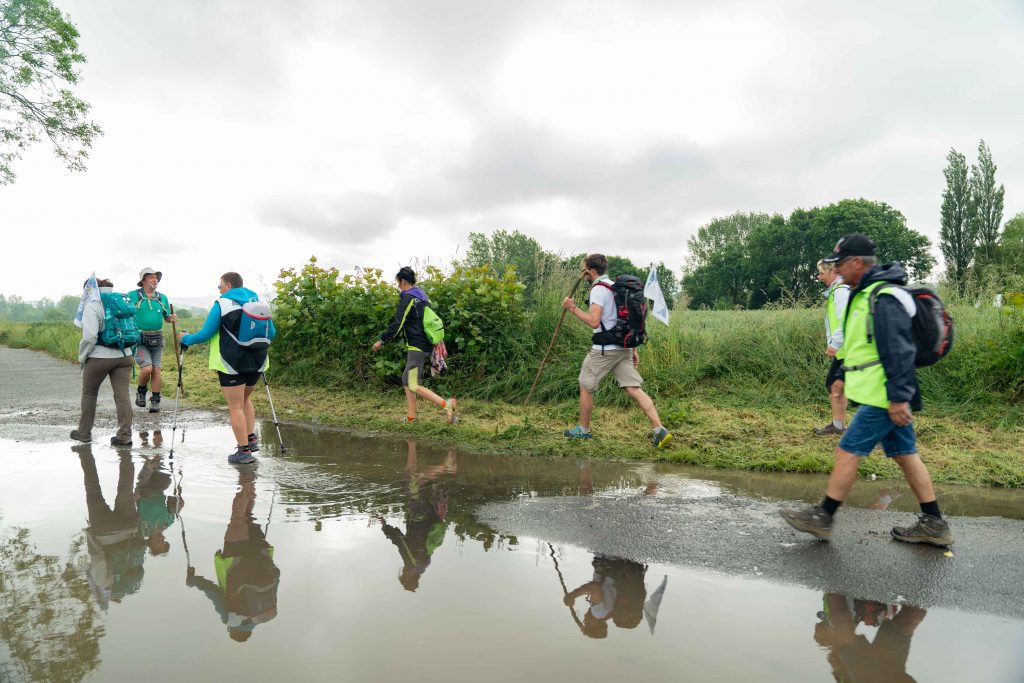
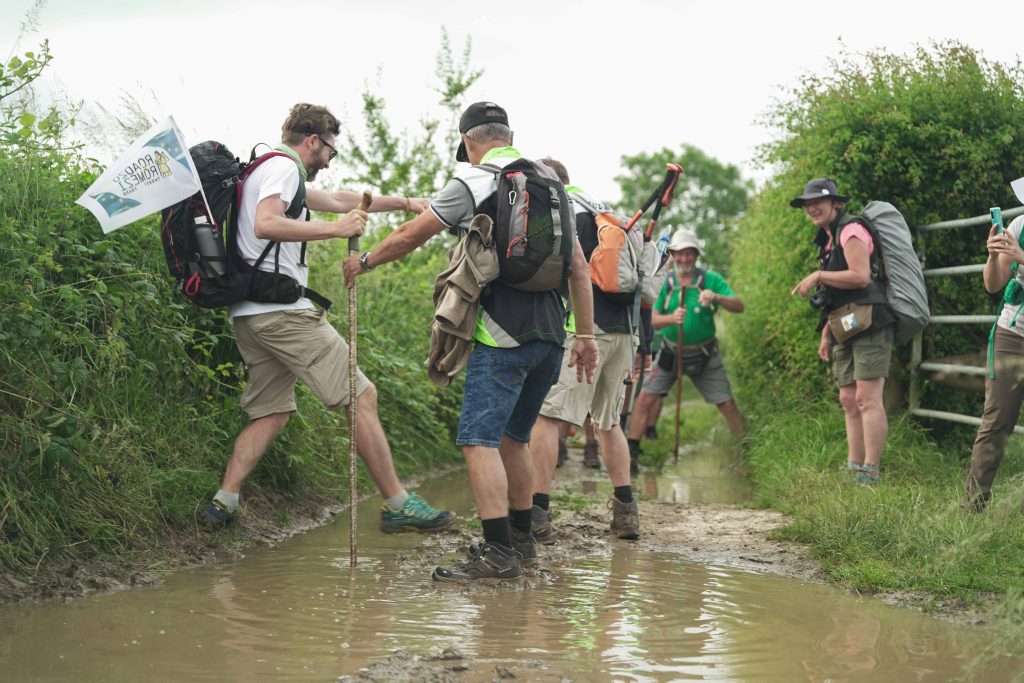
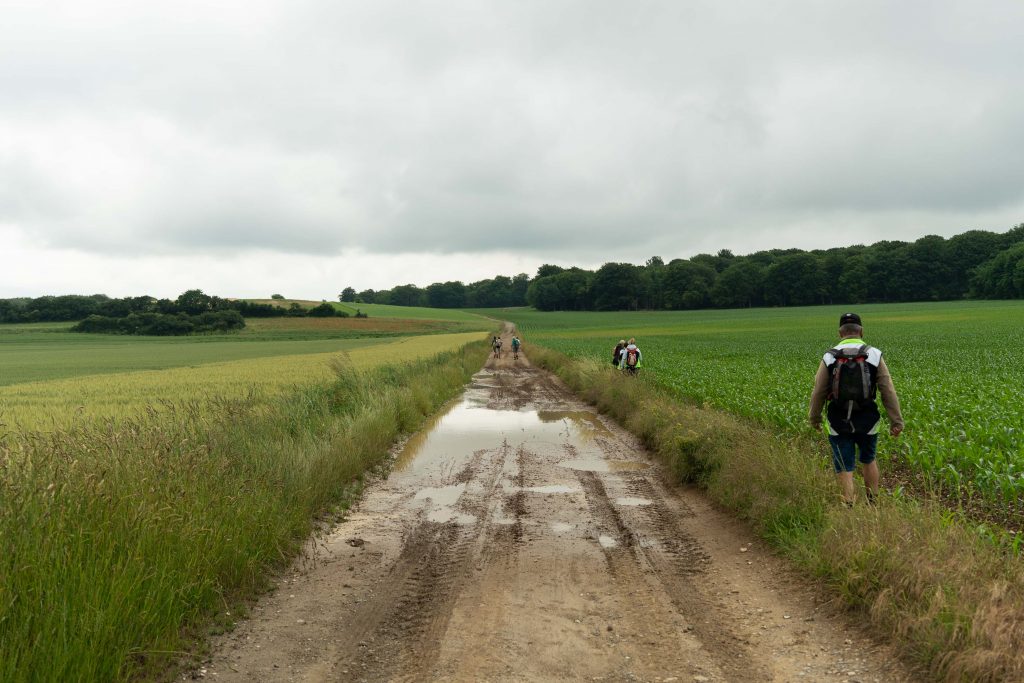
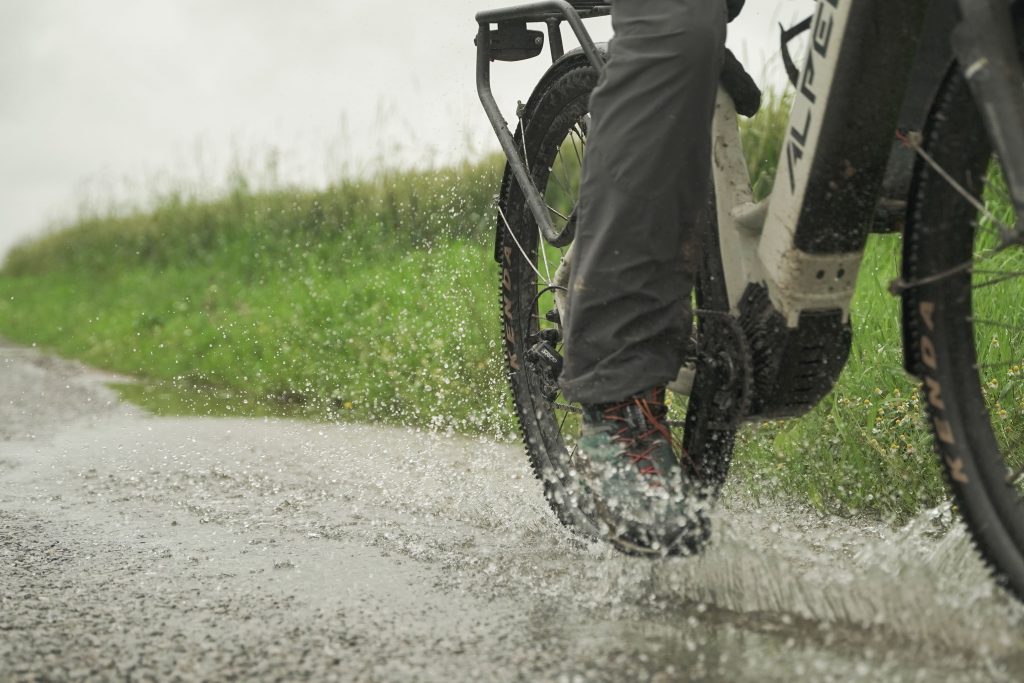
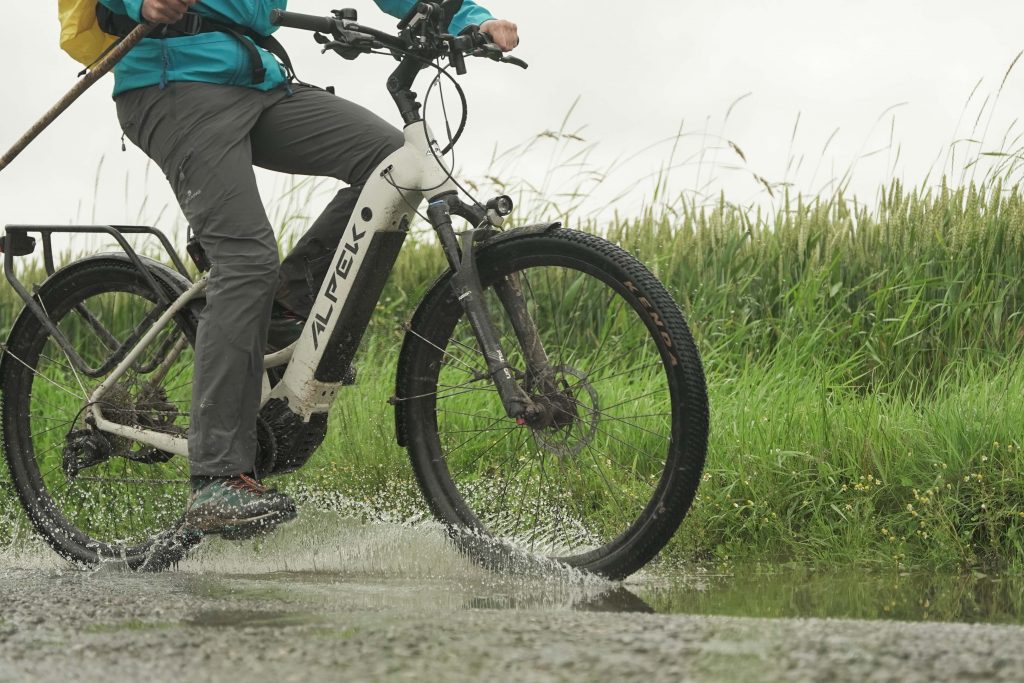
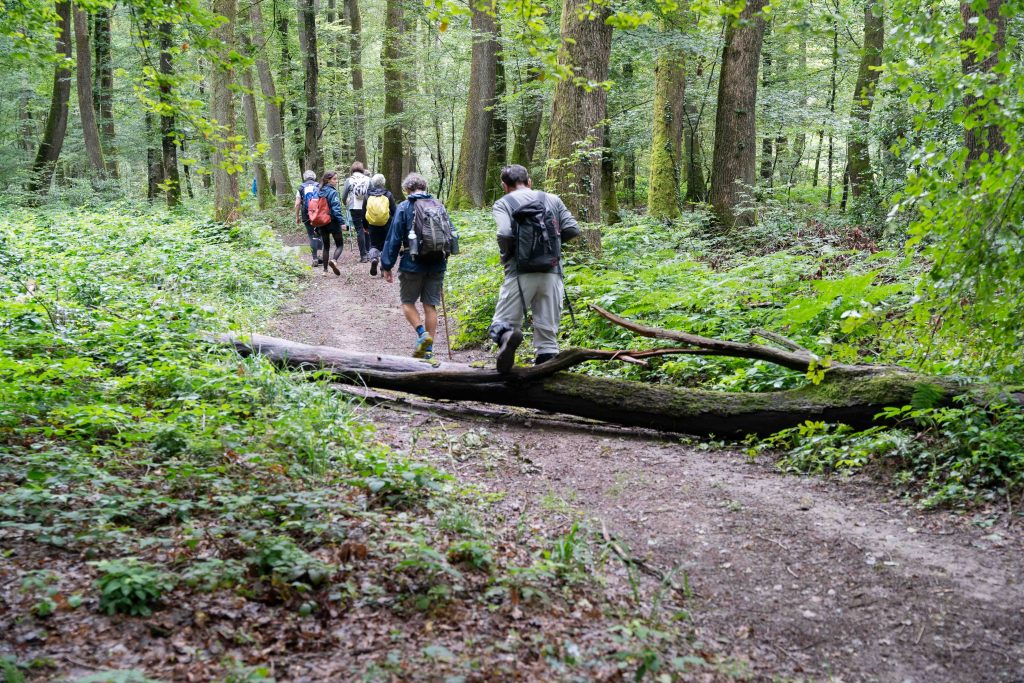
6. Is it better to walk or run in the rain?
Do you get wetter running or walking? Think about it for a moment, and then watch this video by MinutePhysics. According to common logic, the less time you spend in the rain, the less likely you are to get soaked. But is this really the case? The world of science only agrees on one thing: it depends. In general, water falls vertically and in a constant quantity on our bodies, so if the distance to a shelter is very short, it is better to run. In this regard, the University of Reading has hypothesised an ideal speed for getting the least wet. In the case of light and vertical rain, this ideal speed corresponds to a light run of 3 m/s, or 10.8 km/h. However, it also depends on the size of your body, the length of the run, and the intensity and angle of the rain.
But what about when the rain moves almost horizontally together with a strong wind, what should you do then? According to physicist Franco Bocci, with tailwinds the best way to go is to walk at a brisk pace, while running would be the best solution for headwinds. For a more accurate estimate of how wet you might get, considering the different variables, physicist Doug Craigen has come up with an interesting calculation model. In addition to physicists and mathematicians, the Australian television programme MythBuster proposed a curious and amusing experiment with a run in a wetsuit and cotton suit, under artificial rain: try it to believe it!
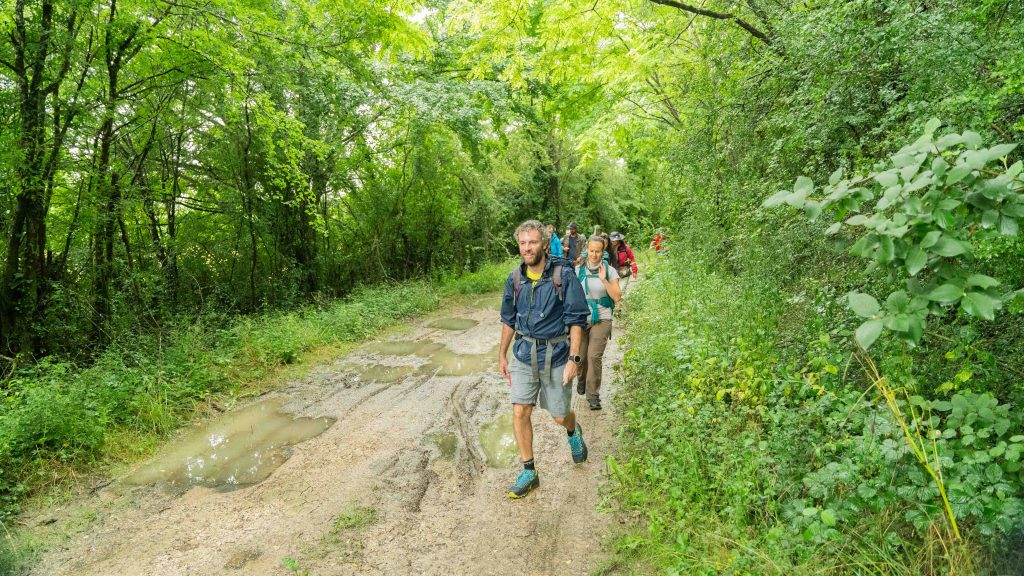
7. Walking in the rain alone or in company
One of the best things of walking alone, is being able to move freely and without compromise. To live in the moment without thinking about your day-to-day problems. However, if you decide to travel on rainy days, or when the weather may hold other surprises in store, it’s a good idea to plan your itinerary and follow it without changing it. And make your to set off with your mobile phone well charged. In fact, if something unpleasant should happen, family and friends, whom you will have informed of your travel route, will be able to provide more precise directions to the emergency and rescue services.
Going for a walk, even in the rain, can be interesting when you’re by yourself. But it’s even more fun with a friend or a group. However, if you’re with people who don’t like the rain or struggle in bad weather, it can be tiring and make you want to stop. Hiking in the rain with others can be helpful in emergencies because you can support each other. Whether you’re an expert or just joining along, knowing the route and how to act in the rain is crucial for handling surprises. If there are kids in the group, it gets trickier. Balancing tough parts of the hike with the kids’ need to explore makes it hard to reach the destination safely, especially on a rainy day.
If your family also includes a four-legged friend, you should know that taking him out on a hike in the rain requires for you to know how to handle him. A dog appreciates the rain much more than we do, but if you’re used to taking him out only in good weather, he may run away if suddenly he finds himself in the rain. Sounds and smells can be more intense in rainy weather, and your furry friend may not hear your call due to the noise of the rain or wind. He may also be more frightened and run away due to thunder and other noises. In the latter case, it is better to find shelter or go back home. In addition, your dog will get pretty soaked from a hike in the rain, so you’ll need to dry him off as best you can, for example with a hairdryer as soon as you return home. You could dress your dog with a waterproof cape, but if you want to leave him free during the walk, it could get in the way of his movements.
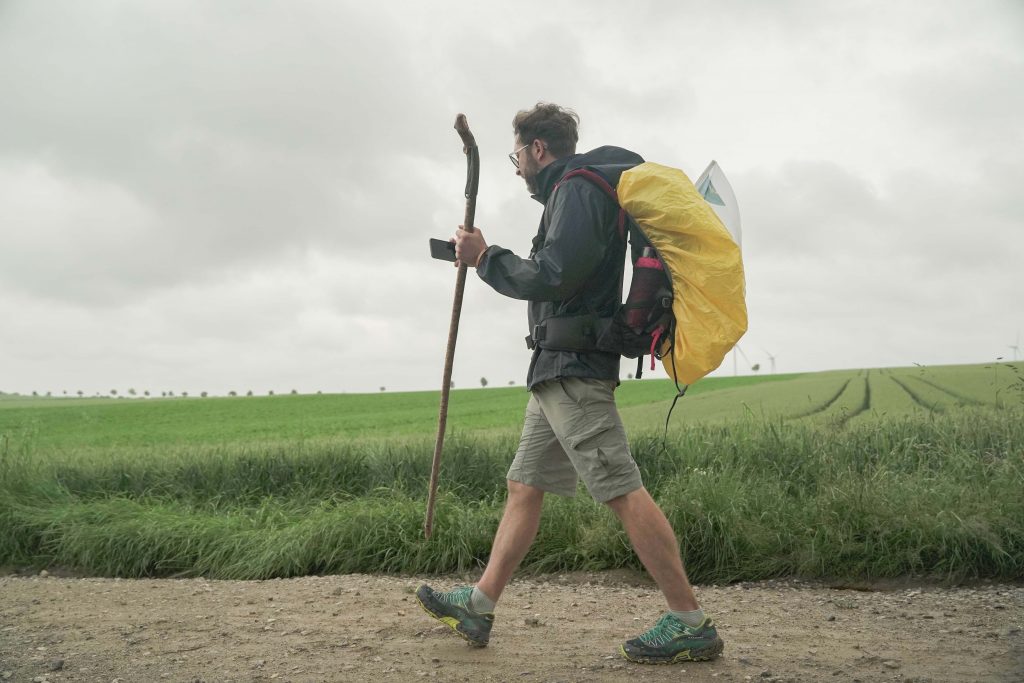
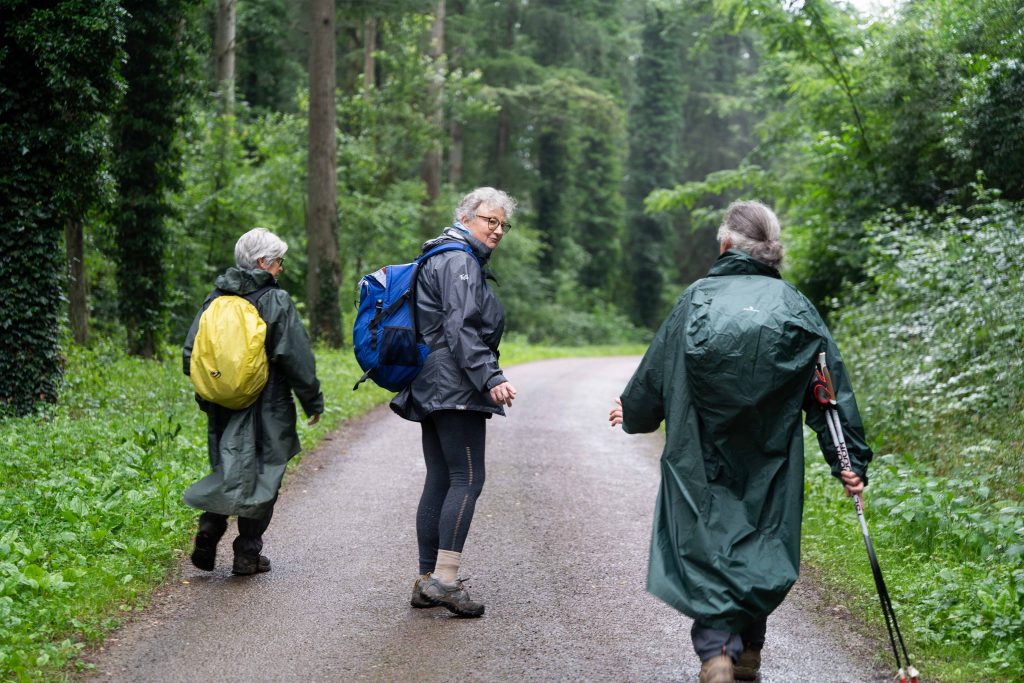
8. Accept the rain like you would the sun, because it is good for you
It is true that a dark sky makes hiking outside less cheerful, but on a rainy day the air you breathe is actually cleaner. This is according to an MIT study, published in the journal Atmospheric Chemistry and Physics, which shows that the air is less polluted during and after the rain. This happens because pollutant particles such as soot, sulphates and bacteria are captured by water droplets and therefore fall to the ground.
Furthermore, according to a study by Japanese researchers published in the International Journal of Sports Medicine, physical activity in cold, rainy weather results in burning more calories and fat, compared to the same practice in good weather or indoors. It is not only your metabolism that benefits from walking in the rain, but also your skin, as the moisture makes it cool and supple, and above all your mood.
Have you ever noticed how the air smells after rain? It is a particular scent, called Petrichor. The smell appears due to the combination of a molecule, geosmin, produced by the bacteria Streptomyces living in healthy soils, with oils released by plants after periods of drought, and with ozone created by a chemical process after lightning strikes. This fragrance, to which people are very sensitive, has a calming effect. Also calming is the sound of the rain itself, which, being a constant sound, hides the perception of other sounds and acts on the brain, inducing a feeling of relaxation, which favours sleep, and reduces anxiety and stress. Another ‘side effect’ of walking in the rain concerns your psyche, and more specifically the increase in self-esteem. Walking in adverse weather conditions will lead you to accept that there is nothing wrong with not being in control of everything all the time.
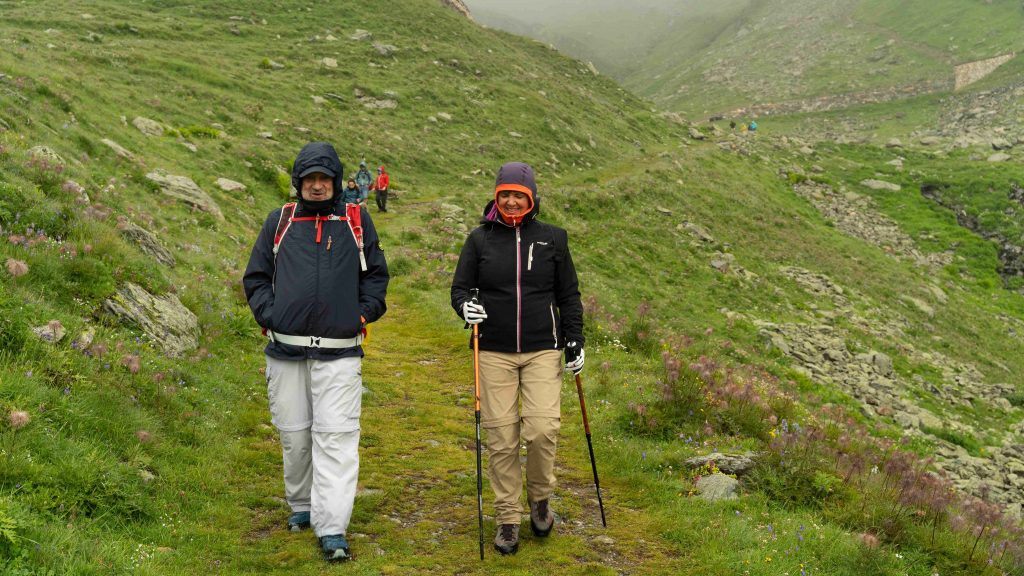
9. Learn to wait
“I’m singing in the rain, Just singing in the rain, What a glorious feelin’, I’m happy again. I’m laughing at clouds. So dark up above. The sun’s in my heart. And I’m ready for love…” sang Gene Kelly in the famous 1950s film of the same name. Walking in the rain also means being able to spend some time standing still and living it to the fullest. To observe nature and the surroundings, enveloped and transformed in the gloomy atmosphere. This is something we would not normally do due to the hectic pace of our lives or our eyes constantly turned to our mobile phones. The different and unusual spectacle you might witness will give you a different perspective on the world and yourself. And if you’re lucky, you may even spot a rainbow!

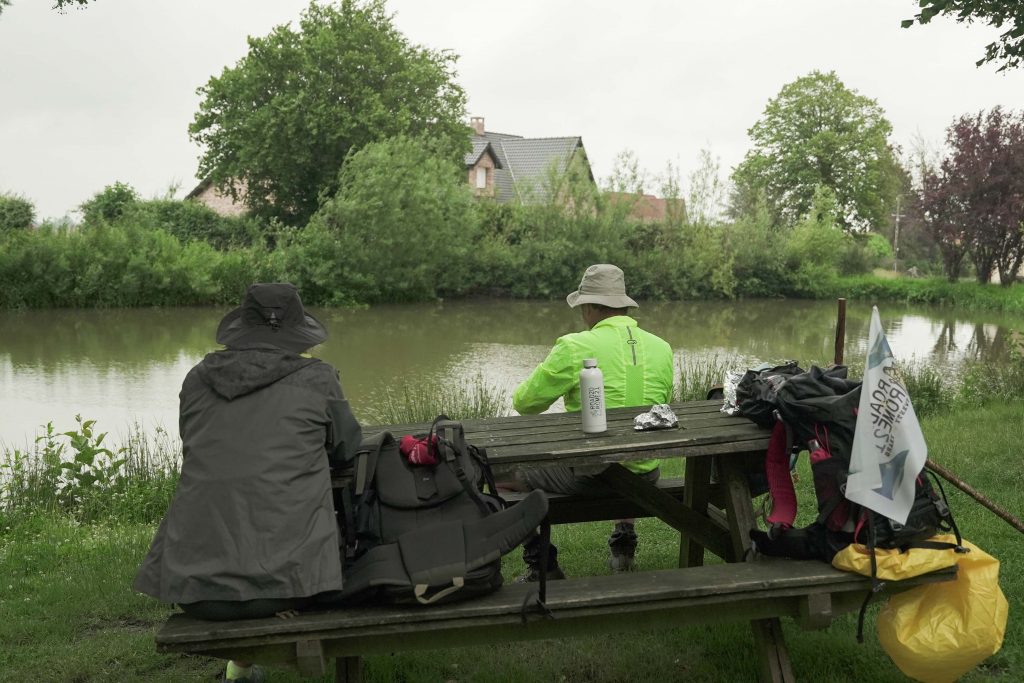

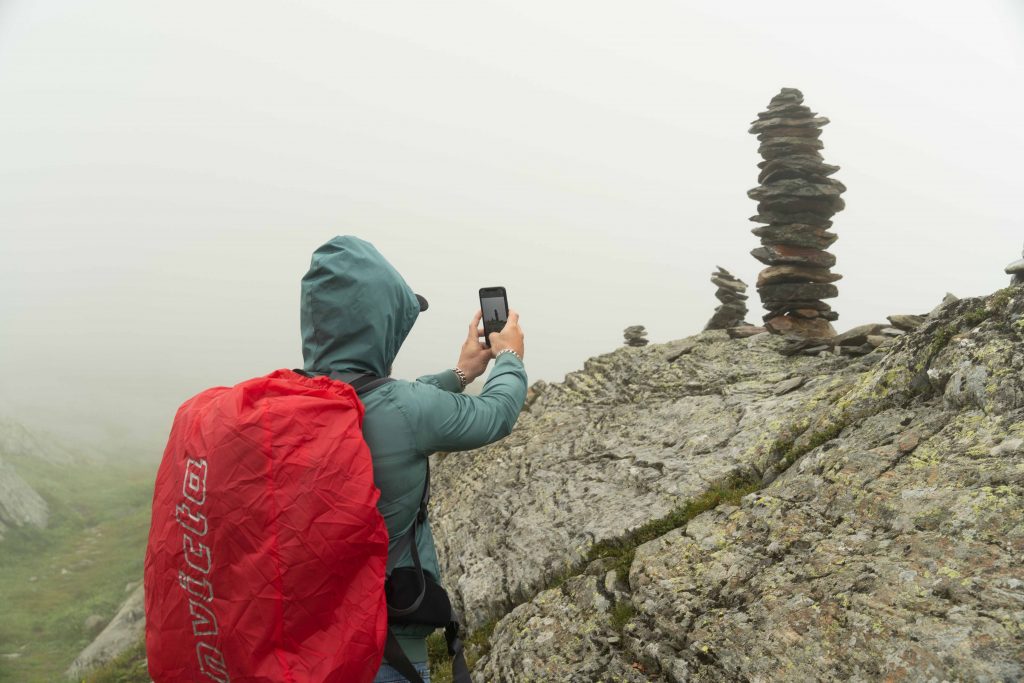
10. Don’t forget to smile!
The rain will test you, that’s for sure, but how you react to the challenge is entirely up to you. A day’s walk in the rain is, in this sense, a metaphor for life, which requires us to adapt and thus get out of our comfort zone. We know how difficult it can be to stay calm when everything seems to be going wrong, but take this moment as an unexpected adventure to throw yourself into. If you just can’t cheer yourself up, our advice is… smile! Laughing at your own misadventures can be a good way to learn how to play down, to use self-deprecation and to have fun both during, and on the way back, with the tales of your rainy hike. Who knows, you might decide to plan some more time in the rain!
A smile on your face is the first step towards positive thinking.
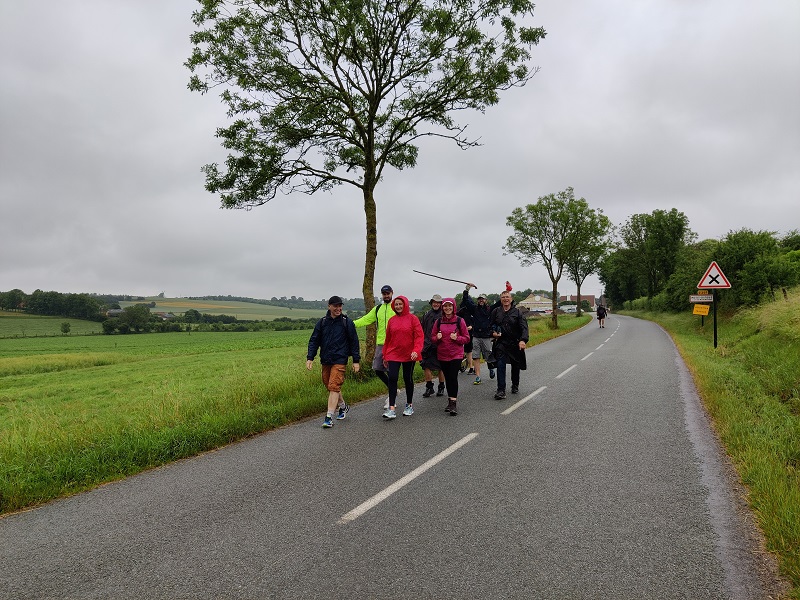
Last but not least, remember that the goal of walking in the rain is to enjoy the experience, without taking risks, and having to give up is just a postponement. If you have any doubts, if you are looking for advice or would like to exchange opinions, don’t forget that our Facebook community is here for you!









